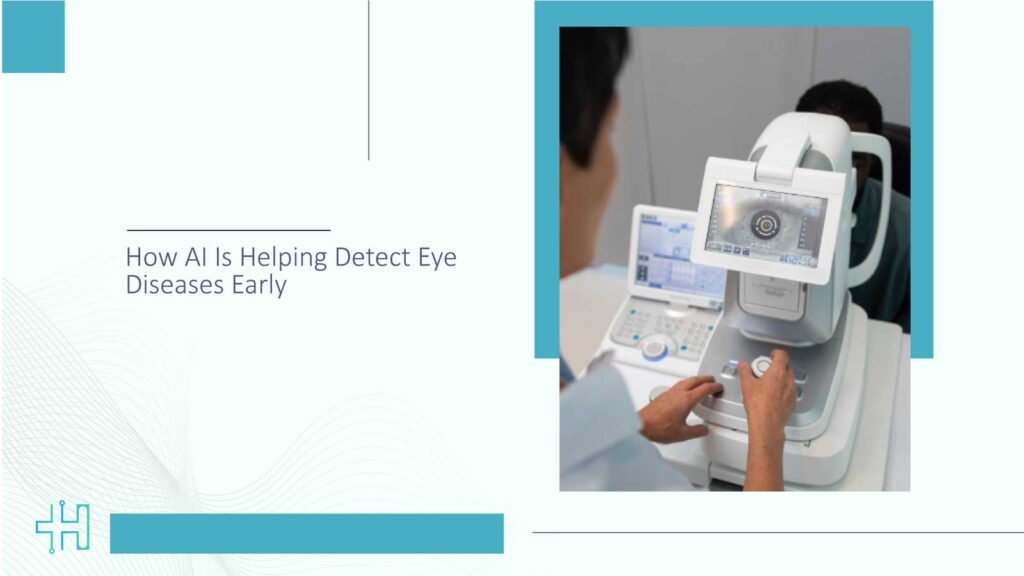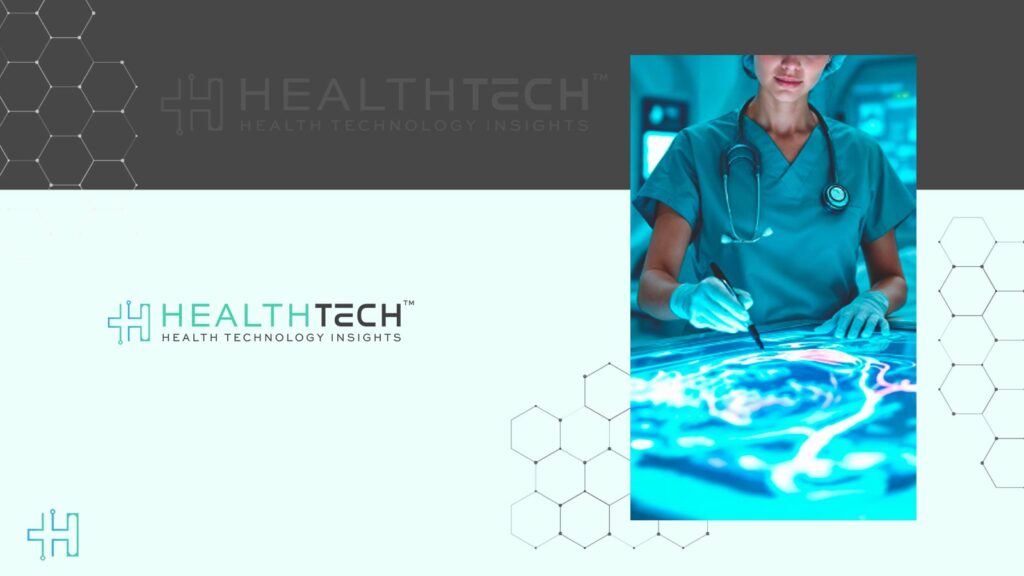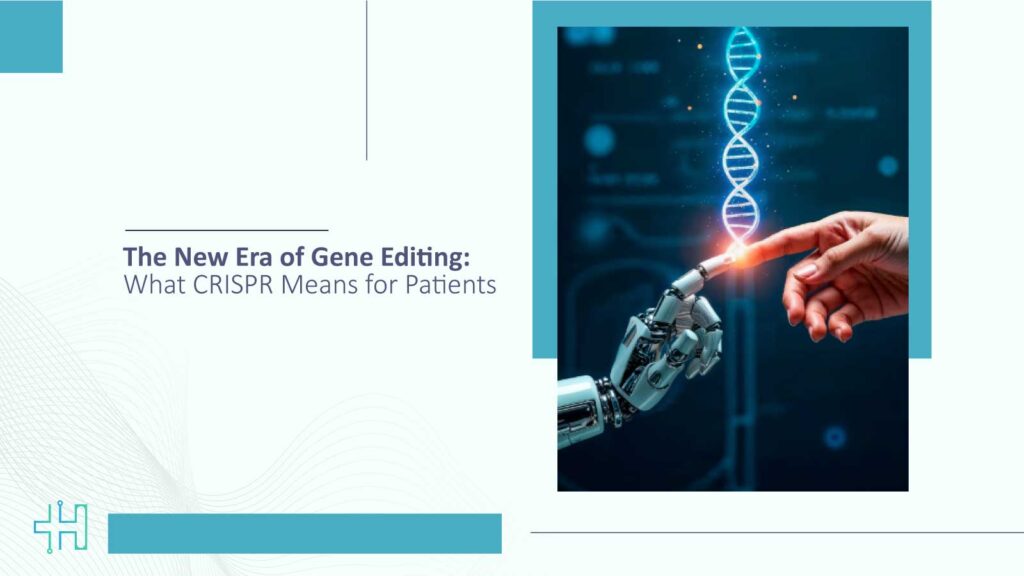An annual eye exam might be a totally different experience with AI, where it could only take you a few seconds to get a signal “very early retinal changes which might indicate disease – please contact your ophthalmologist”. Eye diseases are the biggest problem for the majority of people, as they wait until vision is dramatically affected before they become aware of them. However, a silent revolution is taking place in the field of eye diseases, called artificial intelligence (AI), which is launching devices capable of seeing eye ailments before signs appear, thus granting both patients and doctors a crucial lead time.
Seeing is not only believing but is also a gauge of health. Some of the most serious eye diseases – diabetic retinopathy, glaucoma, and aging-related macular degeneration – are slow and silent in their development, and most of the time, the affected have been harmed long before they can feel something is not right. Even though traditional screening and diagnostics work well, there still remain some drawbacks: a lack of specialists, separation of access to rural or underprivileged areas, and variability in human interpretation. AI can assist in crossing these divides.
To start with, the usage of AI in eye diseases early detection has been explained, followed by the category of technologies that make this possible, scenario-based applications, benefits therefore difficulties, and the future implications.
Why Early Detection Matters?
Eye diseases are extremely sneaky. When the vision problems show up, a major part of the damage has already been done. For instance:
- Diabetic retinopathy (DR): Diabetic retinopathy is the main contributor to vision loss among diabetic patients. The alterations in the blood vessels of the retina accompanying diabetes might be overlooked until the advanced stages.
- Glaucoma: As the “silent thief of sight,” glaucoma rips away the optic nerve little by little, most of the time without any symptoms.
- Age-related macular degeneration (AMD): The illness damages the macula, the central part of the retina, and can step by step ruin central vision.
Don’t you see that early recognition of such diseases would give patients the possibility of saving their eyesight by a wide margin? Treatments (laser therapy, injections, surgery, drug control of risk factors) are generally more successful in the early stages. But, since the initial symptoms are not obvious in nature, the correctness of the diagnosis is very much reliant on visual and data analyses done by experts. And this is the place where AI is an effective partner.
How AI Sees the Eye: Core Technologies
Many AI-driven tools for eye disease detection, in essence, depend on the following:
1. Imaging modalities – the source of data:
- Fundus photography (pictures showing the inside of the eye in color)
- Optical coherence tomography (OCT) (retina tissue is shown in cross-sectional “slices”)
- Optical coherence tomography angiography (OCTA) (depicts the smallest blood vessels)
- Visual field testing and perimetry (measures the functionality of the lost vision)
- The most advanced methods in terms of fundus autofluorescence, fluorescein angiography, and others.
2. AI algorithms – the part of the process that involves the interpretation:
- Machine learning (ML) models that find similarities in already labeled data
- Deep learning (DL) – especially convolutional neural networks (CNNs) that do not require manual intervention for feature extraction from images
- Multi-modal models that not only use imaging data but also consider clinical data (age, blood pressure, medical history) to make accurate predictions.
These systems are trained on large datasets of retinal images, tagged with known diagnoses, severity levels, or outcomes. Over time, the algorithm “learns” which visual features – tiny hemorrhages, microaneurysms, thinning of the retinal nerve fiber layer, abnormal vessels – correlate with disease. Newer models also predict risk of progression or treatment response.
Results of a systematic review and meta-analysis performed recently revealed that AI is capable of greatly facilitating diagnostic precision in eye disease detection with a standardized effect size (SMD) of 0.88 across different eye imaging tasks. Lippincott Journals. The time-consuming process can be transformed into a side task, where an AI-assisted clinician is enabled to work faster and better, since in some studies, the accuracy of human experts has improved even up to double when they received support from the AI system.
Benefits & Impact
AI adoption in the early diagnosis of eye diseases has a lot of benefits:
- Extended access to screening: AI-based screening techniques can be used not only at the doctor’s office but also at the pharmacy or even in a mobile unit. This way, specialists’ help isn’t that necessary in faraway places.
- Quicker and more scalable evaluation: AI can swiftly and standardly process images without tiring.
- Precision and uniformity: AI eliminates both the variability between different experts and even the same experts in reading complex retinal images.
- Lower cost: Only the high-risk cases are referred to the experts for further examination. Thus, AI screening helps to make the best use of resources.
- Risk stratification and prognostics: The sophisticated models help to predict those patients who are most likely to progress, giving the physicians the opportunity to decide on a personalized follow-up.
In a meta-analysis of various AI-based ocular imaging tasks, AI outperformed human clinicians significantly in all diagnostic metrics.
Challenges and Limitations
Despite its promise, integrating AI into routine eye care faces real challenges. Below are key issues:
1. Data Bias and Generalizability – AI models can only be effective if their training data is of high quality. For instance, if the images used to train the model mainly come from one demographic group, like middle-aged individuals or patients from a specific area, the model might not work as well on other populations. Some of the differences that impact the accuracy of the AI include age, ethnicity, and retinal pigmentation, so it is very important to have datasets that are diverse to create fair and reliable AI systems.
2. “Black Box” Explainability – Most deep learning models do not explain the process of how they arrive at a prediction, which makes it difficult for clinicians to trust them. There is a need for AI tools to be more interpretable if they are to gain widespread use; hence the demand for providing doctors with visual cues or explanations that make them comprehend the reasoning behind each result.
3. Clinical Workflow Integration – AI implementation in the real world cannot be solely by AI installation. Essentially, these technologies must be compatible with EHRs, medical imaging, and referral processes. They will risk complicating the situation rather than making it efficient if they do not integrate. An important step towards practical implementation is training the staff to understand the AI outputs and working them into the daily routine.
4. Regulatory and Legal Issues – AI models for diagnosis are considered medical devices and need to adhere to the safety standards set up for them. The question of accountability in the case of errors is still a difficult one – whether the clinician, the institution, or the software provider should be responsible. Patient safety and trust can be ensured only if there are clear guidelines and regulatory oversight.
5. Continuous Updating and Validation – The advances in medical science and imaging technology necessitate the evolution of AI models as well. The process of regular retraining with new data keeps the algorithms up to standard and relevant as new diagnostic standards are introduced. Without continuous validation, even the best-designed models could become obsolete.
6. Ethical Concerns, Equity, and Access
Finally, AI adoption raises questions of fairness and accessibility. If these tools are more readily available in well-funded or urban settings, they risk deepening healthcare inequities. Protecting patient privacy, securing informed consent, and ensuring equitable distribution of AI-powered diagnostics are critical to achieving truly inclusive healthcare innovation.
What the Future Holds?
The future of AI in eye care is bright, as the development is shifting into personalized and predictive medicine. The accuracy will be improved by multimodal models that combine imaging, genetics, and health data, whereas federated learning will enable systems to get better together without any breach of patient privacy.
Open AI will probably become a regular part of the daily routine of eye examinations, and the feedback during imaging will be instant, and a tele-ophthalmology network in less accessible areas will be supported by AI. Moreover, patients may become even more independent through diagnostic devices at home and wearables, thus the proactive eye health monitoring may become accessible to all in the future.
Tips for Patients & Clinicians
For patients:
- Ask whether your eye exam includes advanced imaging (OCT, fundus photos).
- Inquire if AI-assisted screening is available in your area – especially if you are at risk (diabetes, family history, age).
- Stay current with regular eye exams, especially if you have systemic disease like diabetes or hypertension.
For clinicians & health systems:
- Consider piloting AI screening in primary care or outreach settings.
- Ensure AI tools are validated on local populations.
- Train staff to understand AI limitations and to interpret results intelligently.
- Monitor performance over time and update models periodically.
- Watch for regulatory guidance, data privacy rules, and ethical frameworks.
Conclusion
AI isn’t a miracle – it won’t do away with human doctors, but it is a great helper in spotting eye diseases earlier, more consistently, and more fairly. The role of AI in eye care will only grow as imaging technologies, algorithms, and data-sharing advance.
This implies that for patients in the US, there will be a time when early screening will not only be possible at specialists’ clinics but also at local providers or even mobile units, thereby making retinal health more accessible and more preventive. The better the results, the earlier a change in the eye is detected. We are receiving better tools to detect changes and take actions earlier with AI coming.
FAQs
1. How does AI detect eye diseases?
Artificial Intelligence (AI) uses various eye-related imaging data, including retinal images and Optical Coherence Tomography (OCT) pictures, to help it figure out minute changes that are caused by eye diseases, especially diabetic retinopathy, glaucoma, and macular degeneration. It studies a huge number of images before it decides to go with human medical experts gradually, it becomes skillful in finding minute changes when diseases have reached the very early stages.
2. Which eye diseases can AI detect early?
AI can detect diabetic retinopathy, glaucoma, and age-related macular degeneration the best. Besides that, it is further developing the capability of suggesting the occurrence of myopia or strabismus in kids and of determining overall vascular health through retinal imaging.
3. Is AI replacing eye doctors?
Negative. AI does not take the place of ophthalmologists; instead, it works alongside them. These instruments facilitate the process of screening vast populations, selecting the most urgent cases, and improving diagnostic accuracy, but the final diagnosis as well as treatment decision is always made by the doctors.
4. Is AI-based eye screening safe and reliable?
Indeed. The AI models that are cleared for clinical practice undergo lots of validation and testing to make sure they are safe and accurate. However, they should still be regarded as a guide for the professional evaluation only and thus, used together with human professionals.
5. Will AI make eye exams faster or cheaper?
Definitely. The screening that is powered by AI can make the whole process faster, thus only the necessary cases will be referred to specialists. This would mean that quality eye care will be accessible as a result of the system in remote or less-developed areas, where the early detection will be made cheaper and available to a larger number of people.
Keep reading on Health Technology Insights.
To participate in our interviews, please write to our HealthTech Media Room at sudipto@intentamplify.com





